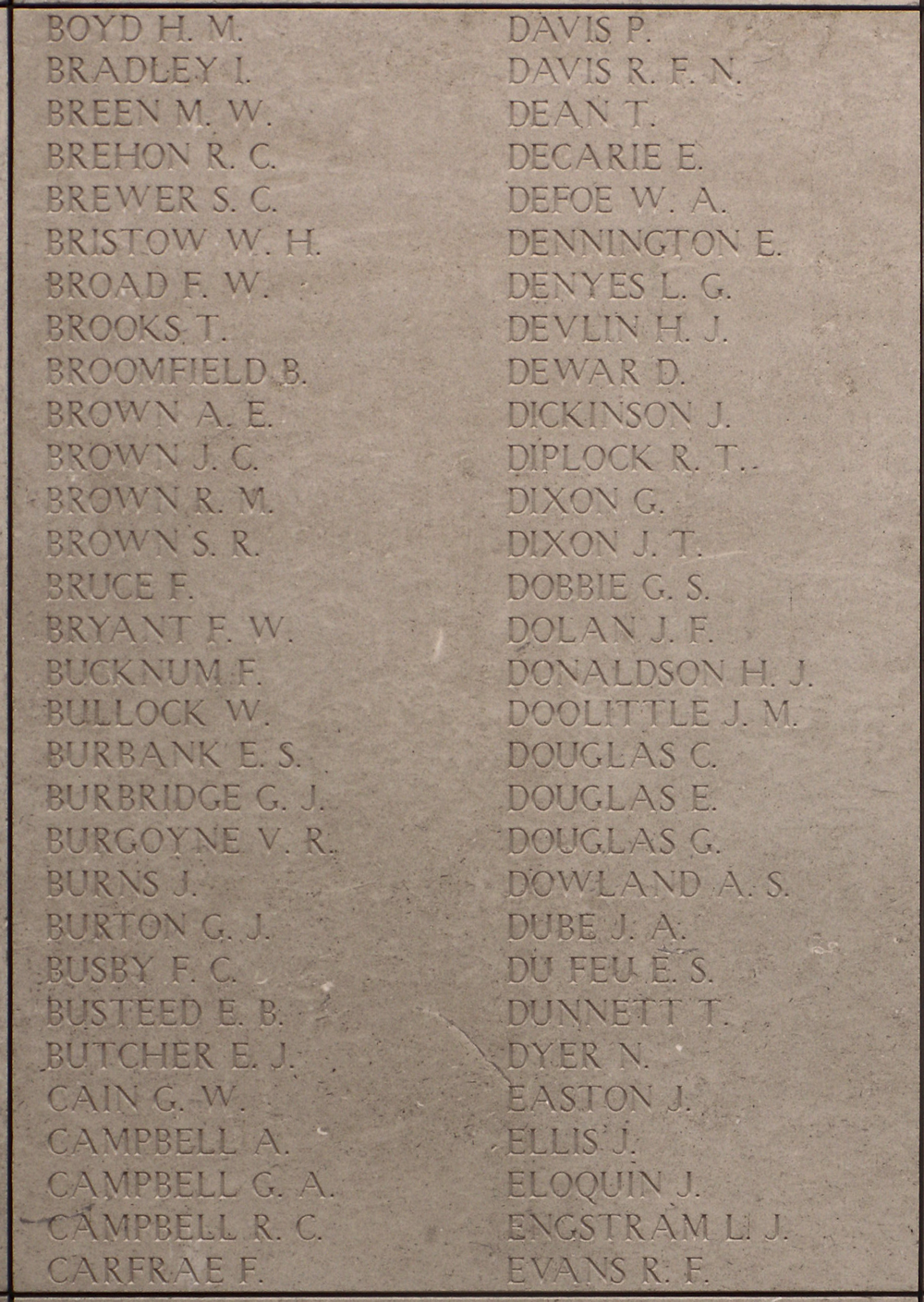Here-in follows a history assignment paper written by student, Elaine Yu. Her in-depth research is presented here in full, as written.
111145 John Frederick Dolan was born on July 23rd, 1890 in Fredericton, New Brunswick to Roman Catholic parents James Dolan and Catherine Dolan. John also had an older sister by the name of Mary, who was five years older and a younger brother named Leo, who was five years younger. He [John] had blue eyes, brown hair and a fresh complexion. Dolan most likely grew up in the city of Fredericton, as his place of residence before the Great War was also Fredericton.
In late 1914, Dolan quit his job as a civil engineer and joined the Canadian Forces. He officially signed up on November 18th, 1914, in Halifax, three months after what is now known as the Great War began. Most of Canada was excited and eager about the war; leading thousands of young men to join the army within weeks after the war started. Dolan, being only 24 at the time, with a height of 5ft. 7¾ inches and weighing 160 pounds, was a prime candidate to go into battle. But perhaps one of the reasons he signed up three months after the war began was because he was indecisive about joining the Military. The salary for a private of a dollar a day, with a ten-cent bonus if the soldier was on the field, was lower than that of a civil engineer. But having no wife or children also meant that Dolan would not have to deal with supporting a family while he was away in a war that promised fame and glory. Peer pressure may also have contributed to his decision to become a member of the military, as propaganda gave the impression it was the duty of the men to go to war. Another possible reason for this delay was because of his occupation as a civil engineer. He may possibly have been involved in a project that would not be finished until at least a month or two after the war began, and so it is possible that Dolan decided to finish his project before setting off to battle.

Upon signing up, Dolan was put into the 4th Canadian Mounted Rifles, with the regiment number 111145 (see editorial note at the close of this assignment), and was a private. As the 4th Canadian Mounted Rifles were a mounted unit, they trained on horseback. This continued until the spring of 1915, when all the horses of the unit were handed over to the 2nd Canadian Division, and the regiment accepted to serve as a dismounted unit. On the 18th of July 1915, the 4th Canadian Mounted Rifles boarded the Hesperian and headed overseas to England. Dolan may have felt proud or excited to finally be leaving Canada to fight in the war. However, upon arriving in England, the regiment underwent another 4 months of training. His first experience in the trenches would be in early November, when squadrons alternated for 48-hour shifts in the trenches near St.Yves. In this first experience in the trenches, Dolan may have felt shocked and disappointed in discovering that the glory war had promised was not true, and he may have felt his first regrets about joining upon experiencing the muddy, miserable trench life. But Dolan experienced the true horrors of the Great War only when his regiment set up post at Hill 63, near Ypres. On December 1st the first casualties occurred when a shell burst in the foreword area. Dolan was probably the most frightened and depressed he had ever been in his life.
Dolan stayed in and out of the trenches near Ypres for another 6 months, until the terrible battle of Mount Sorrel. On June 2nd 1916 about 7:45 a.m., Major General Mercer, General Williams, Captain Fraser and Lieutenant Gooderham arrived at the front lines for an inspection of the sap. 45 minutes later, the Germans began to heavily bombard the front lines with shells. As the heavy bombardment continued, Major General Mercer was killed along with many other soldiers. At 1p.m., a mine exploded on the battalion front and the order came to withdraw. On the tragic June 2nd 1916, Dolan was one of the many unlucky soldiers who lost their lives. His body was either never found or unidentified.
[John Dolan is remembered on Tablet J, Panel 32 of the Menin Gate Memorial, Ieper, Belgium.
Please click on the image to see a larger version of the picture.]
Dolan most likely lost his life during the bombardment of shells or was killed by the mine. Due to the nature of the attacks and confusion that day, Dolan's body was probably either disfigured beyond recognition or lost in the confusion of battle. Not even the scar on the left side of his face would separate him from the rest of the soldiers who fell. There is also the possibility that he was blown into fractions due to the mine or the many shells that bombarded the trenches. John Frederick Dolan is now remembered on the Menin Gate Memorial, panel [32], Ypres, Belgium, for his service in the First World War.
Thanks and credit for the biography go to Elaine Yu, who did magnificent work in researching and presenting John Dolan's story. The only matter of note, for clarity, is that Pte. Dolan attested into the 6th Canadian Mounted Rifles in 1914, which became part of the 4th CMR in January 1916.
The Menin Gate, Panel 32 image of Pte. Dolan's name was supplied by 4cmr.com